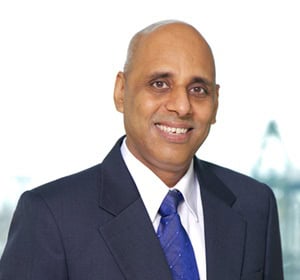Australia’s aged care sector is in the midst of a major overhaul – and while much of the focus is on the workforce, funding, and governance, there’s another important piece of the puzzle that often goes unnoticed. Connectivity.

Digital tools and the rise of AI in aged care are transforming how providers monitor, communicate and deliver patient care. From virtual consultations to resident portals and safety systems, the entire aged care experience depends on reliable WiFi. Yet in many facilities, the network simply isn’t up to the task.
The federal government’s Digital Transformation Strategy for Aged Care outlines a future where technology is woven into the fabric of service delivery. But realising that vision depends on getting the basics right, including something as fundamental as stable, facility-wide connectivity.
With over 220,000 operational places allocated to residential care services in Australia and with those aged 65 and over projected to make up between 21% and 23% of the population by 2066, the demand for connected, digitally enabled care environments is only set to grow.
Yet despite this growing demand, many facilities are still grappling with WiFi networks that weren’t designed for the realities of modern aged care — creating daily frustrations for residents, staff and providers alike.
The connectivity challenge
Today’s volume of devices, digital services, and real-time expectations can overwhelm the legacy networks in many older aged care facilities.
Coverage remains one of the most common pitfalls, particularly in resident rooms and common areas. In facilities that operate out of older buildings, where thick walls and complex layout can interfere with signal strength. This causes frustrating buffering or dropped call connections.
Congestion is also a growing issue. Today’s residents are more connected than ever, with many using smartphones, tablets, smart TVs and health-monitoring devices daily. With most legacy networks not designed to handle this kind of load, they often struggle to prioritise traffic or manage bandwidth effectively across dozens or even hundreds of connected devices. This becomes problematic during high-demand moments, such as when a resident is on a telehealth Zoom call or relying on a wearable device to track a heart rate or alert staff to a fall.
Access and onboarding are other areas that can quickly become a logistical challenge in aged care environments — not just for residents, but also for staff and guests. Many facilities still rely on manual setup and shared passwords, which are difficult to manage and even harder to revoke when someone moves on or a device is lost.
These outdated methods encourage a multitude of privacy and security risks. In many cases, resident devices, staff tablets, IoT sensors and even critical medical systems share the same network – so if one device is compromised, all become vulnerable. For environments handling sensitive personal and medical data, that’s a risk no provider can afford to take.
Unfortunately, limited on-site IT support remains a major hurdle. Most aged care facilities don’t have dedicated IT teams, which means troubleshooting WiFi issues often falls to already stretched staff or results in long wait times for external support.
Rethinking connectivity for aged care
Fixing WiFi in aged care involves focusing on connectivity as an enabler of independence and smarter care. This requires a shift in how operators approach network design and management.
Instead of patching over legacy infrastructure, operators need to think longer term. This means building connectivity into the foundation of how facilities operate. It starts with designing WiFi around mapping coverage to resident and staff movements, simplifying login processes so that residents can connect without confusion or assistance, and creating dedicated, secure access for staff, guests and medical systems to prevent downtime. Network architecture with built-in security features will further protect sensitive data and meet compliance requirements, which provides better control and reduce the complexity, especially for the elderly.
This also means building networks that don’t depend on having on-site IT support. Most facilities operate with limited technical resources, so connectivity must be easy to manage remotely – with issues resolved before they disrupt care. As AI tools, wearables, and real-time health systems become more common, aged care networks need to be built with scalability and resilience from the start – not patched in later.
When connectivity simply works reliably, securely, and without demanding attention, it stops being a barrier and starts becoming an enabler. For residents, it means independence and peace of mind. For staff, it means more time for frontline care and less time fixing network issues. And for providers, it’s the foundation that lets every other digital investment deliver on its promise.







Yes. Poor internet access and poorly staffed and tech skilled hamper a doctor’s ability to provide care. This is a constant complaint of the medical team trying to access facility electronic records and medication systems, let alone provide virtual care when no onsite doctor can be provided.
Well, investing in network infrastructure cuts into the profit margin.
Access to all forms of Internet/Web, EMR + AI (including approved medical scribes for patient care), IoT, and other smart technologies will be considered as fundamental as electricity supply in a few short years. RACFs will need to begin the “catch up” process *Now* to build on these expectations. It’s expensive but it will be more expensive in 5 years, 10 years and so on. Embedding solar technologies, subscribing to services from secure mobile technology providers, building dedicated servers and spaces for them… it’s a lot…and the work needs to start now to advocate to government on the need to fund these things appropriately. The next generation (mine in Generation Jones) will EXPECT aged care to provide the same levels of technology services we now take for granted.
Access to all forms of Internet/Web, EMR + AI (including approved medical scribes for patient care), IoT, and other smart technologies will be considered as fundamental as electricity supply in a few short years. RACFs will need to begin the “catch up” process *Now* to build on these expectations. It’s expensive but it will be more expensive in 5 years, 10 years and so on. Embedding solar technologies, subscribing to services from secure mobile technology providers, building dedicated servers and spaces for them… it’s a lot…and the work needs to start now to advocate to government on the need to fund these things appropriately. The next generation (mine in Generation Jones) will EXPECT aged care to provide the same levels of technology services we now take for granted.
A one stop shop- reliable network service provider is impossible to find with the expertise of infrastructure for these aged care services. Unfortunately they don’t have the funding that hospitals have!
Most organisations think that their wifi is a sound solution, but from going in to many organisational facilities they all have issues which slow down staff workflows and processes. It creates frustrations for both the workforces and residents during their day.
I.T. gets it exec and management dont